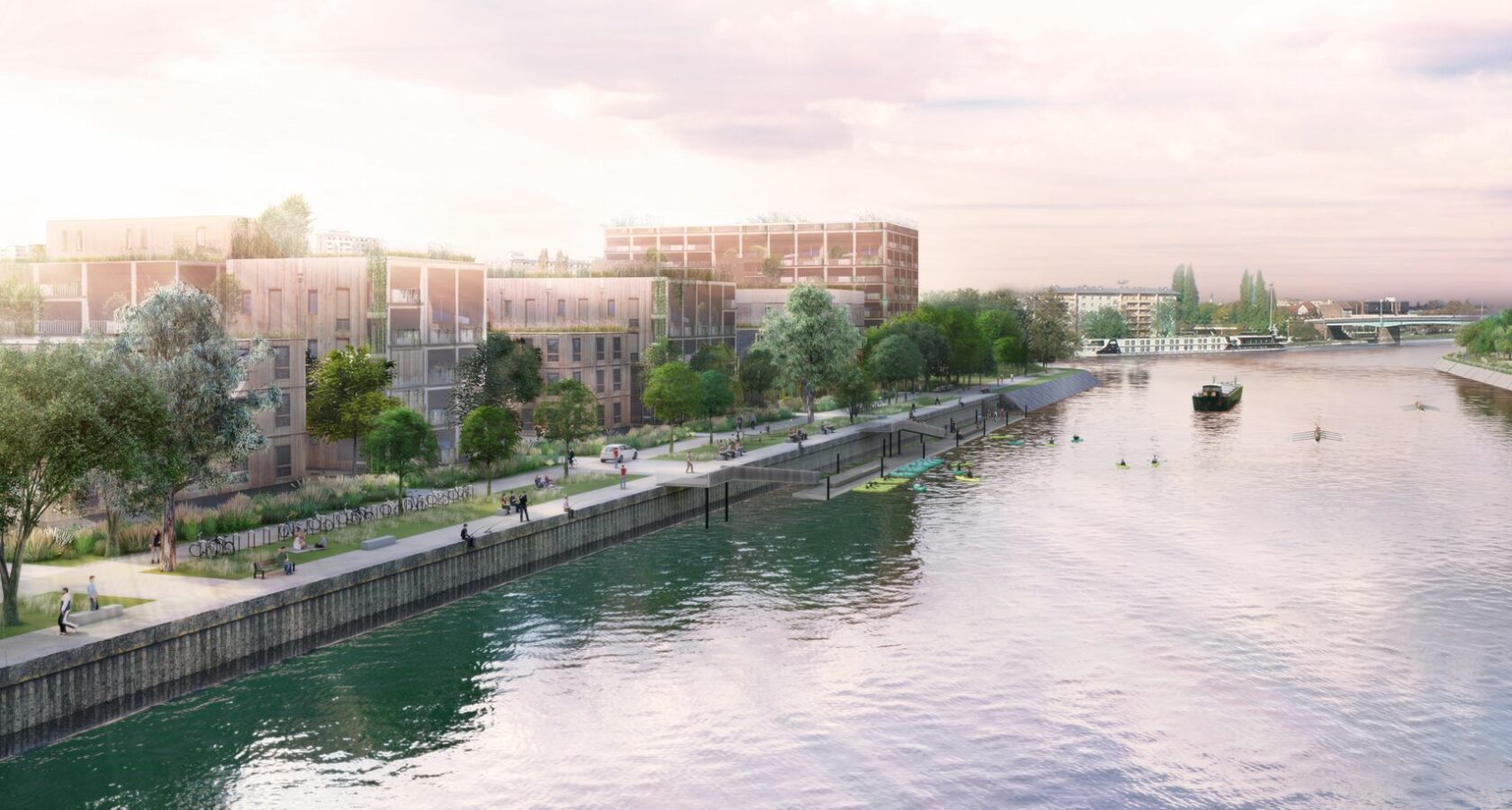Making it possible for everyone to find the right housing according to their means and their desires. Building dwellings that blend in with the landscape. Responding to new styles of living. Surrounded by the city, the port, and nature, the four project districts offer their inhabitants a rich and diverse place to live.
The Deux-Rives project contributes to limiting the urban sprawl which every year destroys more nature and farmland. The new districts are being developed on the disused land of the former port area, creating urban fabric to join the city centre with the banks of the Rhine. Each district – Citadelle, Starlette, Coop, Rives and Port du Rhin – has its own distinctive identity reflecting a variety of architectural forms and centres of interest. Taken together, they forge a new urban area, one that is accessible and diverse, at once lively and relaxed, offering a plethora of local services, and connected to the historic centre, Neudorf, and Esplanade, the student quarter.
Homes for all
More housing is needed to meet the growing needs of the population. Life expectancy is increasing, with natural demographic growth in Strasbourg (+0.5 % per annum) representing an additional 1 400 inhabitants each year. Our households are also smaller than they used to be (2.7 people per household in 1975, compared with only 2.2 today). New homes are being built to cope with Strasbourg demographics and will ensure sufficient housing supply so that prices can be kept under control, protecting the right to housing.
The project design is guided by the quality requirements of the actual dwellings, their surroundings, and everyday uses. This quality is reflected in The project factory, in harmony with the situation between city-port and city-garden.
There is housing to suit all budgets:
- Approximately 40% assisted housing (rented social housing, intermediate rented housing, and home-ownership schemes)
- Approximately 60 % private-sector housing for first-time buyers
And, on the Coop site, several “unfinished” dwellings and workshops, sold for approximately 1000 euros/m² below market prices.
Homes for all ages, in local neighbourhoods with, for example:
- Student residences in the Starlette district, very close to the tram and the Coop district
- Sheltered accommodation for the elderly and people with disabilities
- Atypical shared accommodation (“co-living”)
- Many different shared spaces in each apartment block: rooftops, terraces and gardens, DIY workshops, shared multi-purpose spaces
- 3 new nursery/primary schools, 1 middle school, kindergartens, the Coop’s impressive cultural facilities, 25 % local businesses and shops, etc.
Historic roots and future revelation
In terms of their volumes and size, the way they combine brick and wood, and their sloping roofs and terraces, the new builds recall the Rhine islands, with their port heritage and the historic legacy of Strasbourg. The special relationship with water is omnipresent, and the buildings are reconciled with nature thanks to an approach to greening that combines energy perfomance with a low carbon footprint, in particular thanks to the use of wooden constructions, the preference given to green facades and roofs, and the policy of rehabiliting existing buildings.
The dwellings reflect a bioclimatic design approach, particularly in the attention paid to comfort during the summer months: earth at the centre of the clusters of apartment blocks, so that tall trees can lay down their roots and rainwater can drain into the groundwater, apartments that run across the buildings for optimal natural ventilation, solar protection on exposed façades, loggias, greening of public spaces, etc. The architecture is designed to slot neatly into the surroundings, with the creation of generous loggias, rooftop terraces, picnic areas and playgrounds, gardens, alleys, etc.
At every turn there are green spaces for relaxation:
- Parc de la Citadelle, connected to the district via a new footbridge, and the park at the northern tip of the Citadelle peninsula
- Parc du Petit Rhin, at the junction between the Starlette and Coop districts
- The Deux Rives Gardens and footpath along the Rhine
All these spaces contribute to the distinctive green and blue contours of the area.
10 % participatory housing
This approach, whereby a group of inhabitants get together to design, create and manage its housing needs, will be rolled out in all 4 districts, including via self-redevelopment in the Citadelle district.
Back in 2010 Strasbourg created the National Network of Local Authorities for Participatory Housing.
Cooperative City
The Coop district upholds the values of innovation and solidarity that were the hallmark of the COOP Alsace. The main historic buildings are preserved, renovated, and re-invented in harmony with the surroundings. Life in the district anticipates new modes of consumption and employment based on an approach where consultation, sharing and cooperation are key. The KaléidosCOOP project unites members of the social and solidarity-based economy, craftspeople, the creative industries, and cultural associations.

